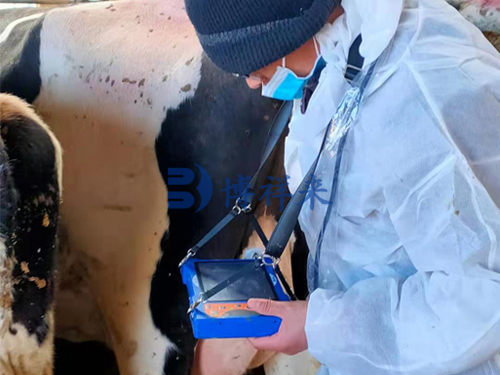The influence of climatic factors on the lack of estrus of cows is also very important. Among them, temperature has the most influence. Cows require a suitable range of sunshine for estrus. Outside the range, there will be adverse effects. Adult cows have more influence on high temperature than young cows. It is more sensitive. This is mainly because adult cows have a heavier lactation burden and a greater increase in heat consumption in the body, so they are more sensitive to high temperatures. The hot climate is prone to cause heat stress in cows, the fertility of cows decreases, the emptying period is prolonged, and the calving interval increases. Therefore, in summer, when using animal B-ultrasound to check the pregnancy rate of cows, you will find that the empty pregnancy rate is higher than in other seasons. In the cold winter, when the temperature is too low, animals must speed up the process of oxidation and decomposition in the body to increase heat production and keep body temperature constant, thereby greatly increasing energy consumption. When energy intake is lower than consumption, energy metabolism will be negatively balanced. It is easy to cause the cow’s body condition to decline or even lose fat, which obviously affects the cow’s fatigue. When using animal B ultrasound to check the cow’s reproductive system in winter, it will be found that many of the follicles on the ovary cannot develop normally.

For beef cattle, on the basis of an ambient temperature of 20°C, for every 1°C change, the maintenance energy needs to be changed by 0.91%. The environmental temperature also has a great influence on feed intake. If the temperature is lower than 15℃, the feed intake of beef cattle will increase by 2%-25%, while the temperature above 25℃ will reduce the feed intake by about 3%-35%. Outside the optimum temperature, the metabolic energy of cattle needs to be increased by 1% for every 1°C decrease in the temperature within the temperature range of 0-15°C, and for every 1°C decrease below 0°C, the metabolic energy will increase by about 3%. Animals lack carbohydrate and energy intake, and hypoglycemia can occur within 4 hours. Prolonged hypoglycemia can affect the secretion of gonadotropins, causing symptoms such as fatigue, low pregnancy rate, and hypofunction of the uterus. Therefore, when using animal B-ultrasound to detect the ovaries of dairy cows, it will be found that the temperature has a greater impact on the ovaries of dairy cows. When the cow’s energy is insufficient, the glucose concentration in the blood drops, and the fat accumulated in the body is mobilized to produce free fatty acids, and the free fatty acid concentration in the blood rises accordingly. As a result, the cow loses weight and loses its body condition.






